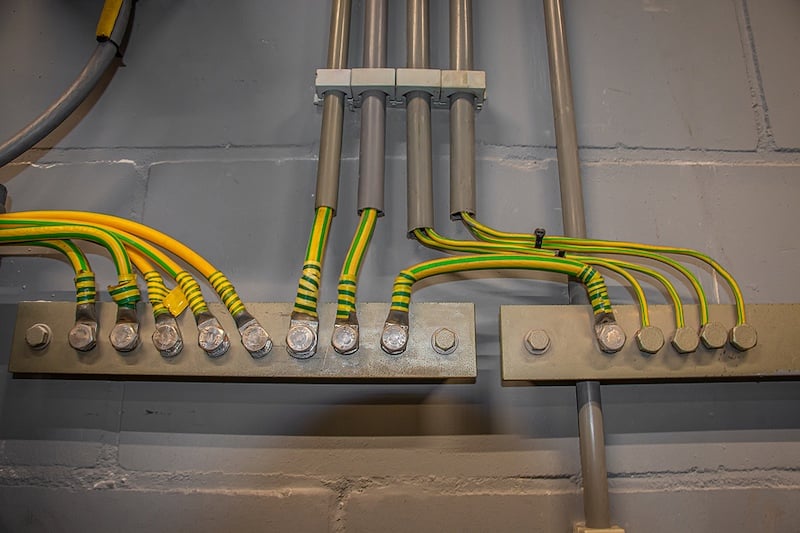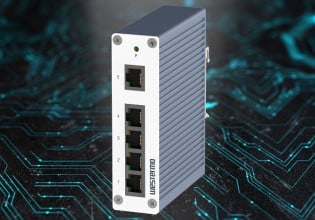The Difference Between Ground and Neutral Conductors in Control Wiring
Learn about how the ground compares and contrasts with the neutral wire and why this wiring is important for safety in control cabinets and other wiring needs in an industrial facility.
For many mechanical engineers and industrial technicians, the topic of grounding and bonding can be confusing, even with a considerable amount of experience in the field. Grounding and cable knowledge benefit engineers in the control realm in various ways. It's important to understand wires and cables for many systems including variable frequency drives, AC motors, and drive systems.
There are many regulations and codes relating to ground wires, so it is an important topic. Neutral and ground often have some relationships, so it can further confuse the topic. This article will contrast the two conductors and also describe a few similar functions when applicable.
The Difference Between Grounding and Neutral Wires
Electricity always involves the transfer of current between a source and load, which means there must be a wire to send electricity and a second to return the electricity.

Figure 1. Electrical grounding in an industrial area can prevent hazards in electrical shortcut situations.
However, most proper residential and industrial circuits contain a third wire (or fourth, or even fifth, in the case of 3-phase circuits). This final wire, the ground, is a particularly confusing topic to those who do not understand the whole purpose behind why they exist and how they are used.
Rather than building up to the main point in this article, the few main points will be described first and then explained further.
- Ground wires carry fault currents, which means that in a perfect world with no faults, grounds would be unnecessary.
- The ground is a redundant connection with neutral to carry current in case of those faults.
- Ground wires must be at least as large as the largest wires in the respective branch circuit.
This article will unpack each of these three points and explain how the ground compares or contrasts to the neutral wire.
Ground Wire and Fault Current
It’s almost always safe to assume that a green or bare copper ground wire will be interconnected between circuits and equipment inside every properly wired facility.
These ground wires might be contained in the plugs, just like the round third prong on a household AC receptacle. In some other cases, permanent wires will be ‘bonded’ to control panels and metal equipment structures inside industrial buildings.
The reason for this ever-present connection is to ensure that if any time, for any reason, a ‘hot’ energized wire becomes frayed, loose, or broken and touches a metal surface, the current immediately has a path back to the electrical source panel. This current will only be present in the ground wire if there is a fault since that hot wire isn’t supposed to touch the appliance under normal conditions. For this reason, it is called ‘fault current.’

Figure 2. One of ABB's gas-insulated switchgear facilities is designed for a reliable power supply. This is one example of a facility where grounding and control wiring is especially important. Image used courtesy of ABB
If we could ensure that no fault current could ever appear, then the ground wire would not be necessary, just expensive. In reality, fault current is rare, so the ground wire isn’t used very often. When it is needed, it can save lives.
If there were no return path back through the ground wire, then the metal equipment would be energized if that hot wire came loose. The high voltage would be powering the metal parts until an unfortunate technician touches the equipment and is immediately shocked or electrocuted. Ground is not a suggestion; it’s necessary.
Neutral and Ground are Redundant Conductors
The purpose of the neutral wire in an AC system is to provide a path for electrons to and from the original source in conjunction with the ‘hot’ line wire. In a 1-phase system, the neutral is critical. Removing this line would create an open circuit, and no load could be powered.
In a 3-phase system, the three different ‘phase’ line wires will share the current in a distributed manner, and there may not be a neutral wire required. A motor is an example of this type of system with three-phase lines and no neutral connection.
In either of those two systems, a ground wire will be present. The line and neutral wires are connected directly to the load device, and they are designed to carry the rated load current and no more. 99.9% of the operating life, the ground wire will sit unused.
In the rare case of a ‘ground fault,’ the ground wire must carry the current back to the source. It doesn’t matter whether the current is carried by a line/neutral set in 1-ph or by three lines in a 3-ph system. Again, the ground wire must be able to carry the current back to the source.
Where is that source? Usually, the source is the main breaker panel in a residential system or back to the source of the branch circuit in a larger 3-phase system, as long as there is a breaker or fused component in that branch.
The objective of the ground wire is first to remove the stored-up voltage on the metal equipment in case of fault, but ultimately to force the opening or breaking of the fuse/breaker, which de-energized the circuit and allows safe troubleshooting.
Grounding Wire Must Be Large Diameter
If the purpose of the ground wire is to allow a breaker or fuse to open in case of a fault, then extra resistance should be avoided at all costs.
If there is even slightly too much resistance in the circuit, the overcurrent device may not open, then you have a permanent dangerous fault. There may be some cases where a breakdown of insulation allows only a trickle of current to ground, but this is not the worst-case scenario for grounding. We must consider the scenario in which the full supply current is flowing from a broken line conductor right to ground.
To ensure minimum extra resistance, the ground wire should be at least as large as the supply and return conductors. In most cases, manufacturer specs will provide guidance on a ground conductor; not only the size and material of the wire, but the exact procedures for bonding the wire to the metal as well.

Figure 3. A conductor used in these specific grounding applications. Image used courtesy of Belden
Ground conductors are certainly important for safety and troubleshooting failures. From experience, you may know that some household circuits, especially in older houses, do not have a ground wire. These circuits are inherently less safe, and therefore we don’t like to run across them.
They are usually allowed to exist if they can’t be upgraded, but not in new construction. These circuits have no way to trip breakers in case of faults, and they can be dangerous, especially around water.
Want to learn more about grounding and power in control systems? We have plenty more!
- Fundamentals of Grounding in Automation Control Systems
- The Importance of Grounding Equipment for Safety
- Understanding Differences Between Power and Ground Side Switching
- Grounding for Control Transformers
- Grounding DC Power Supplies
- Negative Effects of Grounding (Earthing) a DC Power Supply
- The Importance of Neutral Wire in 3-Phase Systems






